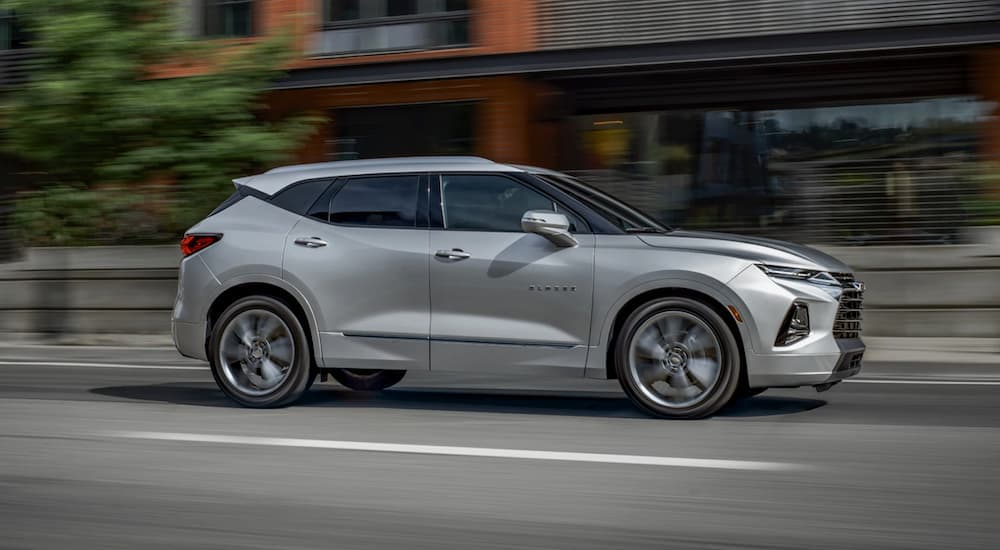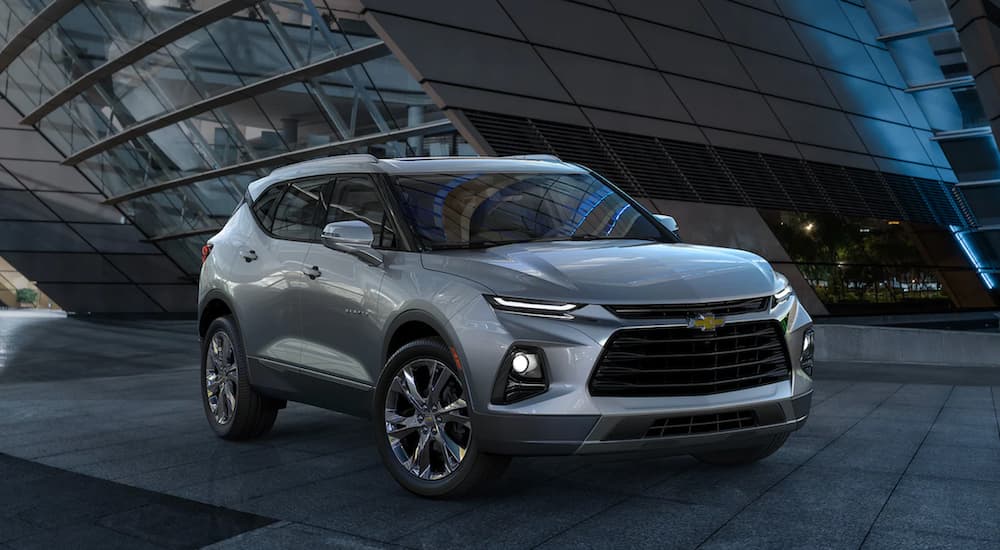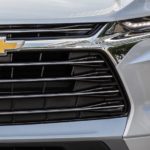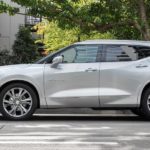Despite it being a relatively new model from Chevrolet, the Blazer has already been through quite a lot since its release. In fact, the changes for the 2022 Chevy Blazer are surprisingly noteworthy, including the complete removal of a couple of trim levels and what had been its base engine. This is actually a great thing, however, as the new base engine is now significantly better than what it had been, and it shows that Chevy is willing to try out some different things to make their popular midsize SUV even better.
But all of this leads to a fairly interesting situation: the Blazer hasn’t been out very long, but already it has a noteworthy lifecycle. It’s not unusual in the auto industry for a new model to come out and then to just sort of sit on the market for several years relatively unchanged. But with the Blazer, we can see that in just a few years, there’s already been a lot going on, and it has made a great crossover even better. Let’s take a look at where the Blazer has been, what’s been going on, and what we should expect to see in the years to come.
Where We Started: The 2019 Blazer
2019 was the very first model year for the modern Blazer (the name “Blazer” goes back to the 1960s, but the modern Blazer is just a few years old), which means it’s really not a very old vehicle at all. When it was first released, the original model had two engines and four different trims available – though one of those trims could be broken down even further into three different versions. That’s a lot of configuration options, and while front-wheel drive was only offered on the standard engine, all-wheel drive could be found on the more powerful option.
The two engines that the Blazer launched with were pretty good, though there was definitely one standout option. It started with a 2.5L I-4 engine that offered 193 hp and decent, if not remarkable, performance. The available 3.6L V6 engine, however, delivered 308 hp and made for a much-improved driving experience, so most reviewers strongly preferred it and suggested it for anyone interested in the Blazer.
Anyone who chose the standard L trim or the 1LT trim would get the 2.5L engine, while the 2LT and higher trims featured the more powerful engine. This worked pretty well, but it made for a situation where there were some clear models to avoid and some that were simply better in every way. Still, the Chevy Blazer at launch was a lot of fun to drive and created a midsize crossover option that was much sportier and responsive than most other models out there.
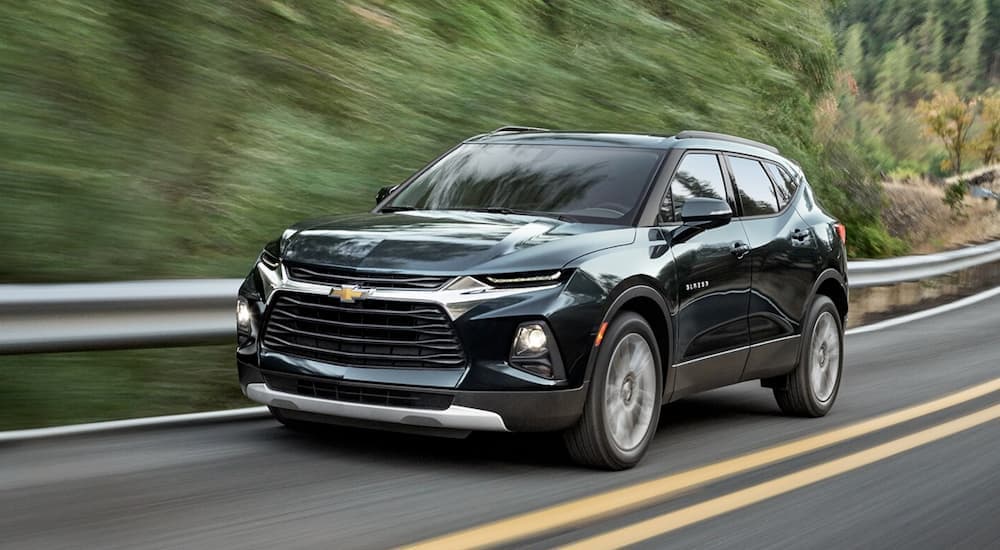
Early Changes: The 2020 and 2021 Model Years
Seeing everything that was available at launch, you might think that Chevy would’ve changed very little in the couple of years since then. In reality, there have been major changes pretty much every year that the Blazer has been available. It sort of feels like Chevy is still trying to figure out exactly what they want the Blazer to be, or perhaps the way that drivers have responded has influenced their moves each year.
In 2020, a third engine option was added and became standard on the 2LT and 3LT trims. This is a 2.0L Turbocharged 4-cylinder that delivers 230 hp, which fits nicely between what had been the standard and the available V6 engine. Best of all, this engine was available with all-wheel drive (the 2.5L was not), so it created even more flexibility for drivers to get what they want. While the Blazer had already been a popular option for a lot of people, this addition was excellent and created a lot more value within the middle of its trim levels.
The 2021 update might not have been quite as huge, but there were still some significant improvements for the Blazer, which was only two years old at that point. For starters, safety features were improved on all but the lowest trims, making systems like automated emergency braking and front pedestrian detection standard on most models. In addition to this, a trailering package became available that boosted towing capacity from 1,500 lbs up to 4,500 lbs.
Latest Updates: The 2022 Chevy Blazer
Now in its fourth year, there’s been another major shakeup for the Chevy Blazer – it might not be as dramatic as adding another engine, but in some ways, it has made an even bigger change. The original standard engine, the 2.5L I-4, has been completely removed for the 2022 model year, and the two lowest trims disappeared along with it. Last year, you could get the L or 1LT trim with this engine, or the 2LT or 3LT trim with the 2.0L turbo standard, or choose the RS or Premier trim with the most powerful engine.
Starting with the 2022 Blazer, there are just four trims and two engines available: the 2LT and 3LT come with the turbocharged engine and front-wheel drive, while the RS and Premier feature the more powerful engine and all-wheel drive. In some ways, yes, this is more limited than when it first launched, but it feels like a more streamlined set of options that has a clearer identity. I feel like with this change, Chevy better understands what the Blazer is supposed to be within their lineup, and they’re giving it a much better sense of purpose.
That trailering package that boosts the towing power of the Blazer is now standard on every all-wheel drive model and is available for front-wheel drive ones. With the elimination of the lowest two trims from before, the Chevy Safety Assist package is also now standard on all models and includes the great functionality of before, plus lane keep assist with a lane departure warning and more. Overall, it’s not a revolutionary set of changes, but it’s one that I think is integral to giving the Blazer a more defined space in Chevy’s lineup.
Where We’re Going: Road Ahead for the Blazer
Speculation time! Chevy and GM haven’t made any specific comments about what the future holds for the Blazer beyond this model year, but I can make an educated guess or two. Now that we’re down to two engines, I wouldn’t be entirely surprised to see an even more capable engine introduced to the lineup. In fact, there have already been rumors floating around for a couple of years about a Blazer SS, possibly equipped with a turbocharged V6 from Cadillac. The Blazer is already billed as Chevy’s sporty midsize SUV, so boosting that performance further would be a great next step.
Beyond that, I think we’ll see a fully electric Blazer at some point in the future – assuming the model lives long enough. GM has committed to having 30 EV models in its lineup by 2025, but I don’t think the Blazer will be part of that. Beyond that deadline, however, GM has set a goal to have their entire lineup consist of EV models by 2035. That will have to include the Chevy Blazer if it’s still around, and with its place as Chevy’s sporty crossover, I think we’ll see the Blazer for many years to come. I could see it being an option with both a single-motor and dual-motor configuration available, in keeping with its design so far, but only time will tell what’s in store for this fun and popular SUV.
